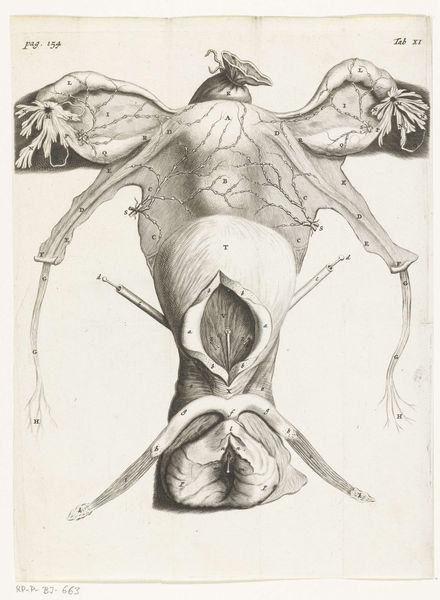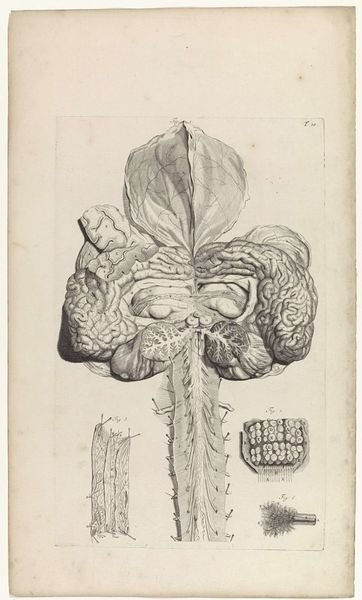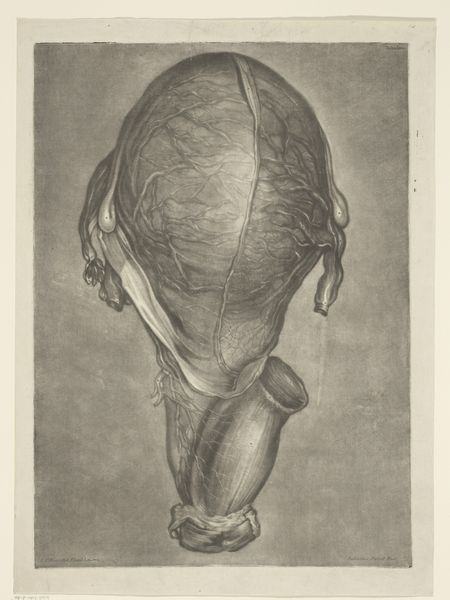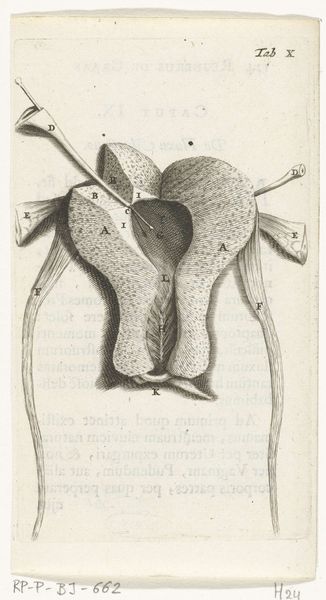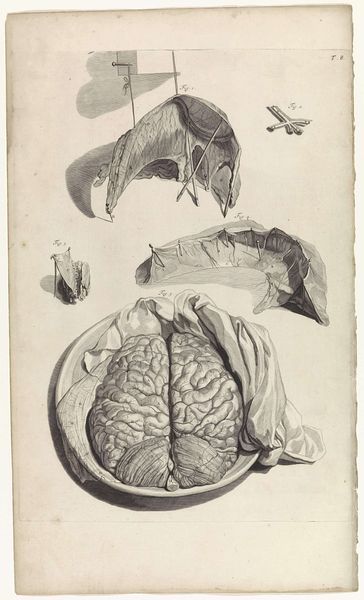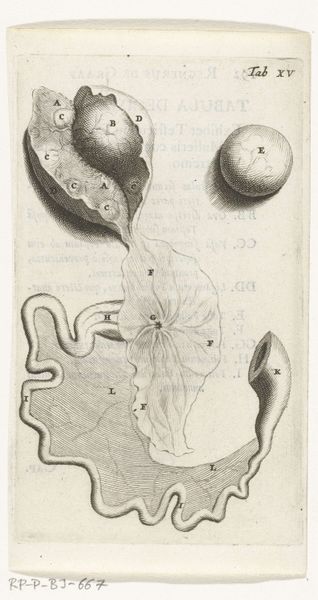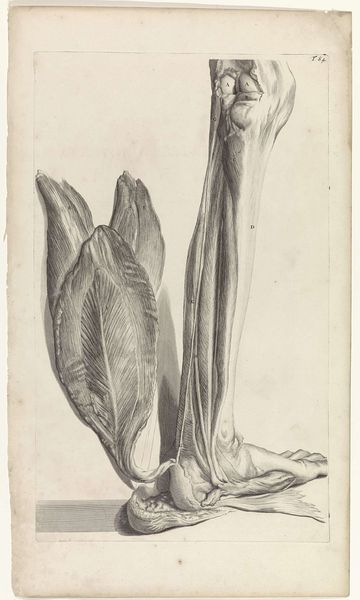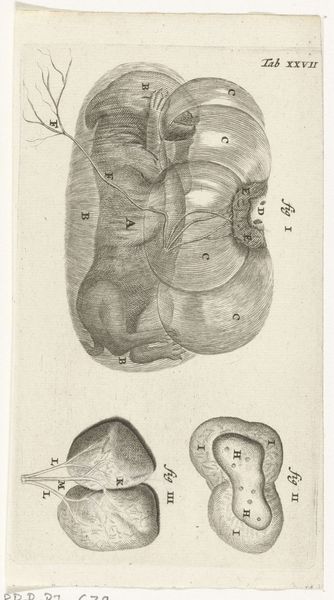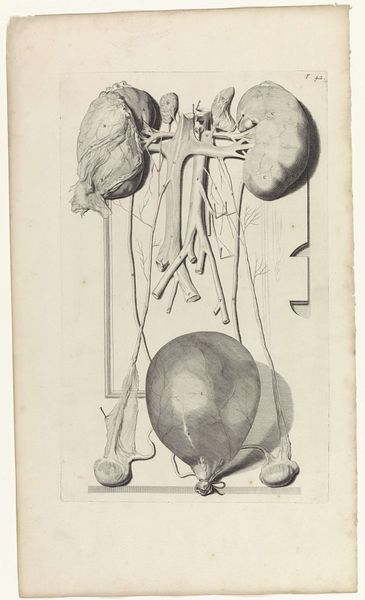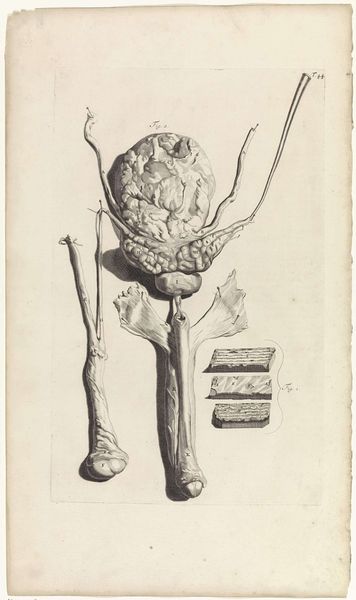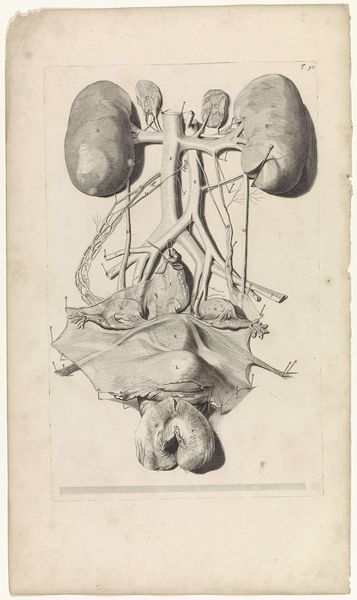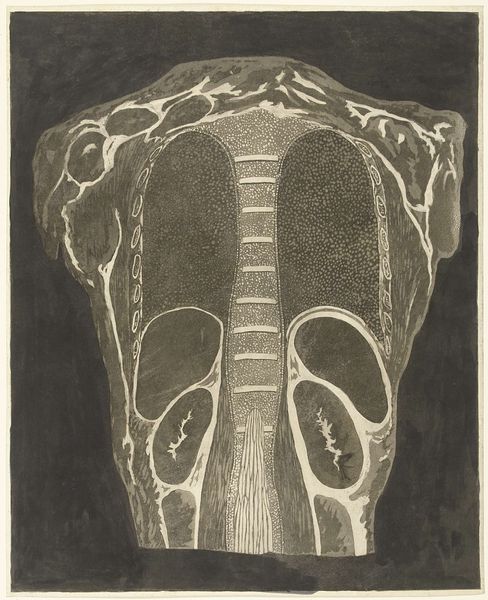
drawing, print, engraving
#
drawing
#
baroque
# print
#
history-painting
#
academic-art
#
engraving
Dimensions: width 302 mm, height 422 mm
Copyright: Rijks Museum: Open Domain
Pieter van Gunst created this print of the underside of a placenta in the Netherlands in the late 17th or early 18th century. It’s a detailed engraving that invites us to consider the relationship between art, science, and society at the time. Engravings like these were tools in the rise of empirical science. The image presents itself as objective, stripped of artistic flourish in favor of ‘scientific’ accuracy. But there are politics to this imagery. In the 17th century, the rise of science was supported by institutions like the Royal Society, used by men of means to consolidate power and influence. The pursuit of ‘objective’ knowledge often marginalized women and other groups, even while depicting the female anatomy. To understand this image fully, we can look to period medical texts, the biographies of scientists, and the patronage networks that supported them. By doing so, we begin to understand that even a seemingly neutral image is shaped by a complex web of social and institutional forces.
Comments
No comments
Be the first to comment and join the conversation on the ultimate creative platform.
